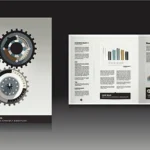Hiring in sales can feel like gambling. Before a rep has closed a deal, you’re betting on potential and hoping instinct and interviews are enough. But real top performers leave clues long before they hit quota. You just have to know what to look for Spotting a Future.
Here’s how to identify those signals early and build a stronger sales team from the start.
Start with a Clear Star Profile
Top performers share a pattern of thinking long before the numbers arrive. Define the pattern you want, then interview and assess against it. Put analytical thinking at the center, along with curiosity, resilience, and ethical judgment. The World Economic Forum’s Future of Jobs research identifies analytical thinking as a core skill employers prize now and over the next cycle, which aligns closely with what winning sellers need to qualify, prioritize, and persuade.
World Economic Forum
Translate that insight into a documented star profile for your team. List the core behaviors you expect during discovery, negotiation, and post-sale handoff. Add must-have habits such as rigorous pipeline hygiene and thoughtful written communication to Spotting a Future. Use that profile in every interview and debrief so hiring leaders speak the same language.
Spotlight content — our Related post reveals trends shaping the future.
Evaluate How They Think, Not Just How They Speak
Great interview charisma can hide weak decision quality. You want evidence of structured reasoning. Build a short scenario, invite clarifying questions, and listen for the sequence: define the problem, test assumptions, weigh options, propose next steps, outline risks, and ask for feedback. Candidates who reason in clear steps will navigate messy buyer journeys more effectively than candidates who only sound confident.
To make this reliable, lean on structured interviewing. The U.S. Office of Personnel Management provides clear guidance that structured interviews, which use standardized questions and anchored scoring, improve fairness and prediction of job performance compared to unstructured approaches. Use that guidance to design prompts around competencies such as problem solving, interpersonal influence, and conflict management of Spotting a Future.
Test for Coachability and Learning Speed
Coachability is the great separator. Offer a mild challenge during the process, then watch what happens. Do they defend their first answer, or do they pause, ask clarifying questions, and iterate a stronger response. Ask candidates to walk through a professional mistake, the lesson they extracted, and the permanent change in behavior. Real learners can describe the before, the after, and the proof of change.
Anchor your rubric in widely used leadership competencies so feedback is consistent. OPM’s leadership competency framework offers a common vocabulary for adaptability, resilience, and continual learning. Map your interview questions and scorecards to those competencies so every interviewer evaluates the same underlying behaviors rather than gut feel.
Observe Preparation and Follow-Through
Preparation is a leading indicator. Before the interview, strong candidates research your customers and your competitive context. During the conversation, they ask practical questions about territory design, buyer personas, product limitations, post-sale expectations, and success metrics. Afterward, notice who follows up with a concise summary of what they learned, how they would add value in the first quarter, and what they would need from enablement to ramp efficiently Spotting a Future.
Treat these touches as data. The quality of preparation predicts the quality of discovery calls. The quality of follow up predicts the quality of deal progression notes and internal communication. People rarely become disciplined after they are hired. They bring discipline with them.
Use Simulations to See Real Behavior
Short simulations reveal more than polished talk. Try a 15 minute mock discovery where the panel role plays a skeptical economic buyer. Include at least one curveball such as shifting priorities or a surprise stakeholder. Look for listening before pitching, clean note taking, thoughtful reframes, and a summary that checks for mutual understanding. Then run a five minute objection handling drill. Ask for three viable paths forward, not one silver bullet. Future top performers do not freeze under pressure, and they do not bulldoze either. They stay calm, test options, and move the conversation toward the next step the buyer can accept.
For an additional signal, ask for a one page territory or account plan. Give a simple prompt, a few basic inputs, and thirty minutes. You are not grading graphic design. You are evaluating clarity of assumptions, sensible activity targets, early risk identification, and a realistic learning agenda Spotting a Future.
Partner with Recruiters Who Understand Sales Psychology
If you want consistent early indicators, use partners who live and breathe sales hiring. A specialized sales recruiter screens for sales-specific competencies such as discovery craft, deal hygiene, and coachability, not only job titles. Working with Sales Talent Agency brings a signal based approach that goes beyond resume keywords. Ask your partner to score candidates against your star profile, to share interview artifacts and notes, and to collaborate on continuous calibration after every round. Good recruiters are a force multiplier for internal judgment, especially when markets move quickly.
Make the First Ninety Days Your Proof Period
Potential continues to reveal itself after hire. Set explicit expectations for the first month, the second month, and the third month. Focus on learning velocity, collaboration quality, and operating discipline, not only closed revenue. Use weekly one to ones to give specific feedback that the rep can apply within the same week.
A research study emphasizes that an effective onboarding strategy strengthens engagement and retention by matching new hires’ learning needs with supportive leadership and clear communication. In practice, this means maintaining frequent feedback, reinforcing purpose, and creating early social connections, especially for sales roles that depend on confidence and trust Spotting a Future.
Read the Quiet Signals That Compound Over Time
Future top performers are consistently reliable. They arrive prepared, they ask thoughtful questions, they keep promises, and they write clear messages that move work forward. They respect time, their own and everyone else’s. They are curious without being performative. They admit what they do not know, they find the answer quickly, and they do not make the same mistake twice.
These quiet signals are easy to overlook during a high energy interview loop. Codify them in your rubric so they are not lost. When in doubt, choose disciplined consistency over dazzling charisma. Consistency builds trust with buyers and with teammates, which shortens cycles and stabilizes forecasts.
The Takeaway
You cannot predict the future with certainty, yet you can build a process that consistently reveals it. Define the signals that matter, test for them with structure, simulate the work, and use the first ninety days to confirm the trajectory of Spotting a Future. When you need additional reach and rigor, bring in a specialized sales recruiter to apply the same standards at a greater scale.
Do this well and you will not simply find people who can close deals. You will build a culture that wins with clarity, calm, and repeatable excellence.
Must-read today — Explore more posts are packed with insight and inspiration.






